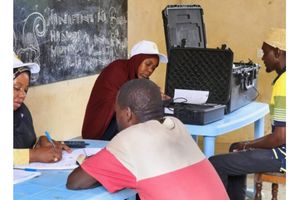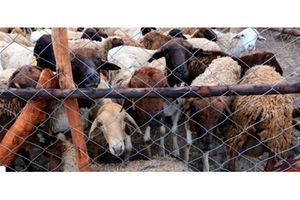Prime
Regional disparity in bank deposits worrying: experts

The Bank of Tanzania twin towers in Dar es Salaam. PHOTO|FILE
What you need to know:
- Finance exports have called for new measures to increase the uptake of banking services in some regions following a BoT report showing glaring discrepancies in deposits mobilised by banks across the country
Dar es Salaam. The Bank of Tanzania reveals in a recent report that the south-eastern and southern highland regions have abnormally low deposit levels, necessitating the creation of new measures to increase the use of banking services in such regions.
The Dar es Salaam region holds the lion’s share of the total savings in the banking system, which shows that the disparity in deposits favours urban areas.
By March 2023, banks in Tanzania had Sh27.82 trillion in total deposits, a significant annual growth of 13.2 percent from the same time in the previous year, the Consolidated Zonal Economic Report released by BoT recently says.
The Dar es Salaam region dominated with a 61.6 percent share, while the south-eastern and southern highlands regions only contributed a meagre 6.8 percent.
Regions that lag behind, according to the BoT report, are Coast, Lindi, Mtwara, Ruvuma, Iringa, Katavi, Mbeya, Njombe, Rukwa, and Songwe.
The stark contrast between the deposit mobilisation figures from different regions highlights the need to address the underlying factors that are impeding the expansion of banking services in the said regions, regardless of whether they have an active economic landscape.
The BoT named agriculture and manufacturing as some of the main economic activities in the south-eastern and southern highlands regions.
Farmers in those areas engage mostly in cashewnut, tea, pyrethrum, rice, maize, and sesame. Manufacturing activities involve natural gas, coal, steel, ceramics, and cement. Speaking to The Citizen, seasonal banker and analyst Mr Kelvin Mkwawa said most of those regions have the lowest penetration of telecommunication services. Mr Mkwawa mentioned regions such as Katavi, Rukwa, Lindi, and Njombe as areas with the lowest telecom service penetration rates in mainland Tanzania, hence low financial inclusion.
“This also means less savings on their mobile wallets and banking. The low levels of deposits in those regions could be caused by low education,” he noted.
To be able to use banking services, he added, one needs to have some level of education.
“Without some sort of education, trust in the banking system also becomes very low,” he said.
According to the central bank, the growth of economic activities and the digitization of banking services continue to be among the key facilitations of financial inclusion.
The BoT report further shows that improvements in economic activities and supportive fiscal and monetary policies also pushed the banks’ loans to various economic activities to Sh24.51 trillion at the end of March this year.
That was an annual growth of 20.2 percent from Sh20.39 trillion recorded during a similar period in 2022.
About 87 percent of bank loans were held by personal, agricultural, and trade activities. However, the southeastern and southern highlands regions, which are predominantly agricultural communities, only recorded 8.4 percent of the bank loans.
According to Mr Mkwawa, one of the strategies to use in boosting deposit mobilisation would be the community banking strategy.
Community Microfinance Groups are tailored microfinance programmes based on membership. It is designed to provide credit to low-income earners who need capital to start their small businesses.
The programme brings together groups of 25 to 50 people, mostly women, and allows them to combine their savings to create a community-based bank.
“Empower the local people to have their local bank offer banking services to the local community. This will partially solve the trust problem as they deal with people that they know in their daily lives,” said Mr Mkwawa.
KCB Bank Tanzania’s managing director, Mr Cosmas Kimario, says expanding the reach of banking institutions, establishing more branches, and promoting the use of digital banking solutions can enhance financial inclusion and facilitate deposit mobilisation in the southeastern and southern highlands regions.
“Even with more agencies, we still need physical branches to support these agency banking services. This has been the case with KCB, as we plan to expand the branch network targeting these regions,” he said.
Mr Kimario said as the economy and private sector grow, the south-eastern and southern highlands regions will also pick up and be active in banking services.
Tanzania Commercial Bank (TCB) Chief Executive Officer, Mr SabaSaba Moshingi, said addressing regional disparity in deposit mobilisation is essential for promoting inclusive economic growth and reducing inequalities.
He said Tanzania can strive towards achieving balanced economic development across all regions by focusing on improving financial infrastructure, encouraging investment and entrepreneurship, enhancing financial literacy, and implementing targeted development initiatives.
“For bankers, we are now tasked with innovating and using the available digital and advanced methods to make sure there is financial inclusion,” he said.
According to the World Bank, the quality of financial infrastructure determines the efficiency of intermediation, the ability of lenders to evaluate risk, and the ability of borrowers to obtain credit, insurance, and other financial products at competitive terms.
“Strengthening financial infrastructure takes time, resources, and political will, however, and so important differences persist across countries,” the WB said in its report titled Financial Infrastructure. Building Access Through Transparent and Stable Financial System.
The bank says access to finance is the result of a complex interplay of different financial intermediaries, the right kinds of financial infrastructure, and a sound legal and regulatory framework.
Agent banking in Tanzania
According to the BoT, by March this year, the number of bank agents had increased by 51.5 percent to 80,295 from the quarter ending March 2022, partly following the moderation of agent banking eligibility criteria and enhanced public awareness.





